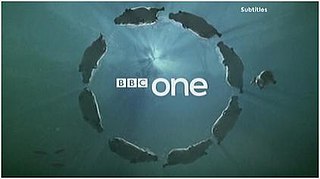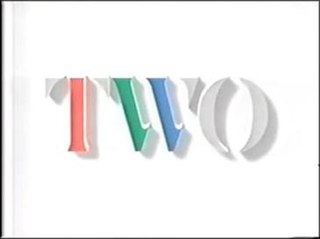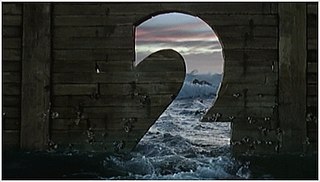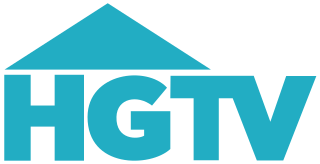
BBC Three is a British free-to-air television channel owned and operated by BBC, on-air regularly from 7.00pm to around 4.00am, timesharing with CBBC. It was first launched in 2003 with programmes targeting 16 to 34-year-olds, covering all genres like animation, comedy, current affairs, and drama series. The television channel closed down in 2016 and was replaced by an online-only BBC Three streaming channel. After six years of being online-only, BBC Three returned to linear television on 1 February 2022.

Good Food was a cookery channel broadcasting in the United Kingdom and Ireland, latterly as part of the Discovery, Inc. network of channels. The channel originally launched on 5 November 2001 and relaunched in its final format on 22 June 2009. Good Food was available on satellite through Sky and through IPTV with TalkTalk TV, BT TV. From 2015 to 2018, Good Food was temporarily rebranded as Christmas Food during the festive season.

Blighty was a British pay television channel broadcasting as part of the UKTV network of channels. The channel was originally launched on 8 March 2004.

The BBC One 'Rhythm & Movement' idents were a set of on-screen channel identities designed by Lambie-Nairn and used on BBC One from 29 March 2002 to 7 October 2006. They replaced the balloon idents, and spelled the end of the much recognised globe identity by the BBC, which had been used in various ways since 1963.
The history of BBC television idents begins in the early 1950s, when the BBC first displayed a logo between programmes to identify its service. As new technology has become available, these devices have evolved from simple still black and white images to the sophisticated full colour short films seen today. With the arrival of digital services in the United Kingdom, and with them many more new channels, branding is perceived by broadcasters to be much more important, meaning that idents need to stand out from the competition.

The Computer Originated World (COW) was the method of creating the BBC1 symbol that was used between 18 February 1985 and 16 February 1991. It was later used by the international, commercial television service BBC World Service Television from its launch until 26 January 1995.

The BBC One 'Circle' idents were a set of on-screen channel identities used on BBC One from 7 October 2006 to 4 December 2016. They also featured on the BBC Studios channel, BBC America. The idents contained images of circles being formed by nature, or people and their actions.
The ITV television network in the United Kingdom began as a group of regional stations, each with their own identities. Each station used its own idents to create an individual identity until the late 1990s when ITV began to introduce a consolidated presentation package as part of a dedicated effort to unify its identity. This article looks at the history of presentation of ITV.

BBC Select was an overnight television service run by the BBC during the hours when BBC1 or BBC2 had closed down, usually between 2am and 6am. The channel showed programming intended for specialist audiences, such as businessmen, lawyers, nurses and teachers, and was designed to be viewed after broadcast via a video recording. It was funded by a subscription, and most programming was scrambled.

W is a British pay television channel owned by BBC Studios, that was launched on 15 January 2003 as UK Bright Ideas. On 15 February 2016, the channel was rebranded as W. The channel currently broadcasts dramas, game shows and documentaries.
Really is a British free-to-air digital television channel broadcasting in the United Kingdom and Ireland, currently owned by Discovery, Inc. The channel launched on 19 May 2009 as UKTV's channel for female audiences. The channel shows a mixture of lifestyle, medical, real life, crime and paranormal programming. It is available on satellite through Sky and Freesat, cable through Virgin Media and also on digital terrestrial provider Freeview.
Channel 5 is a British free-to-air television network launched in 1997. It is the fifth national terrestrial channel in the United Kingdom and is owned by Channel 5 Broadcasting Limited, a wholly-owned subsidiary of American media conglomerate Paramount Global, which is grouped under Paramount Networks UK & Australia division.

The BBC TwoPersonality idents were a set of idents used on BBC Two from 19 November 2001 until 18 February 2007. The idents were produced by the Lambie-Nairn branding agency, who had created the previous look. The idents feature an ivory sans serif white '2' in a yellow environment and performing a variety of tasks, and a purple boxed BBC Two logo.

The BBC Two 'Two' ident was the station identification used on BBC2 between 30 March 1986 and 16 February 1991. It was the last non-corporate look for the channel, and the only look until 2018 that did not feature a numeral '2' in the design.

The Window on the World idents were a set of idents used by BBC Two from 18 February 2007 until late 2014. They were created by Abbott Mead Vickers BBDO and produced by Red Bee Media. The idents featured a number 2 cut out of, or made out of parts of the everyday environment.

The Launch ident was a television station identification used by BBC Two between their launch night in 1964 and the introduction of colour in 1967.
Throughout the years, Children's BBC, and later CBBC and CBeebies, have used a number of different identities. The branding of the stranded service is distinctive both in the past and at present.
BBC Four, and its predecessor BBC Knowledge, are both channels operated by the BBC as cultural and knowledge based channels. Their visual identities therefore have been a result of this aim.
The presentation and the identities of the BBC News Channel, the international counterpart BBC World News and the BBC Parliament coverage channel use specific identities that demonstrate their remit and purpose.

HGTV is a British free-to-air television channel interior home and garden-orientated lifestyle television channel broadcasting in the United Kingdom and Ireland, currently owned by Discovery, Inc. The channel originally launched on 1 November 1997 as UK Style and then was rebranded to Home on 30 April 2009 and was rebranded to its current form on 21 January 2020. HGTV is broadcast 24 hours a day on Sky and TVPlayer. UK Style was transmitted by terrestrial provider ITV Digital 24 hours a day until the company's collapse in 2002. After a slight rebrand to UKTV Style, the channel made a return to terrestrial screens for a time in the mid-2000s as part of the now-defunct Top Up TV system. Home became available as a free-to-air linear service on Freeview from 1 March 2016.




















